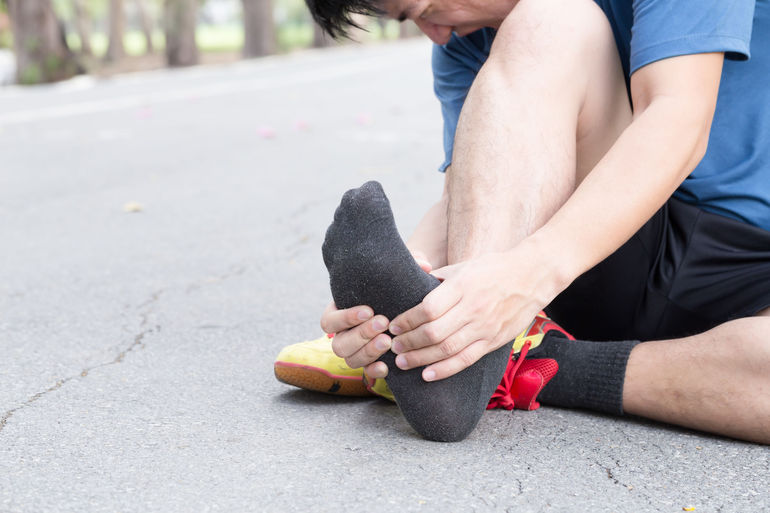The Centers for Advanced Orthopaedics is redefining the way musculoskeletal care is delivered across the region with locations throughout Maryland, DC, Virginia and Pennsylvania.
Plantar Fasciitis Treatment Options: Stretching, Arch Support & Medication

There are several treatment approaches for plantar fasciitis. The first course of action is typically stretching. If you’re experiencing a lot of pain, it may help to keep weight off your foot until the initial inflammation goes away. You can also apply ice to the sore area for 20 minutes three or four times a day to relieve your symptoms. Often a doctor will prescribe a nonsteroidal anti-inflammatory medication such as ibuprofen or naproxen for your pain. Home exercises to stretch your Achilles tendon and plantar fascia are the mainstay of treatment and reduce the chance of recurrence.
About 90 percent of people with plantar fasciitis improve significantly after two months of initial treatment. You may be advised to use shoes with shock-absorbing soles or fitted with an off-the-shelf shoe insert device like a rubber heel pad. Your foot may be taped into a specific position.
If your plantar fasciitis continues after a few months of conservative treatment, your doctor may inject your heel with steroidal anti-inflammatory medication.
If you still have symptoms, you may need to wear a walking cast for two to three weeks or a positional splint when you sleep. In a few cases, surgery is needed for chronically contracted tissue.
Below we run through a few great stretching exercises for plantar fasciitis.
Plantar Fascia-Specific Stretching Program
- Cross your impacted leg over your other leg.
- Using the hand on your impacted side, take hold of your impacted foot and pull your toes back towards shin.
- Check for the appropriate stretch position by gently rubbing the thumb of your unaffected side left to right over the arch of the affected foot. The plantar fascia should feel firm, like a guitar string.
- Hold the stretch for a count of 10. A set is 10 repetitions.
Perform at least three sets of stretches per day. You cannot perform the stretch too often. The most important times to stretch are before taking the first step in the morning and before standing after a period of prolonged sitting.
Anti-inflammatory Medication
Anti-inflammatory medications can help decrease the inflammation in the arch and heel of your foot. These medications include Advil®, Motrin®, Ibuprofen, and Aleve®.
- Use the medication as directed on the package. If you tolerate it well, take it daily for two weeks then discontinue for one week. If symptoms worsen or return, resume for two weeks, then stop.
- You should eat when taking these medications, as they can be hard on your stomach.
Arch Support
- Over the counter inserts (Spenco® Cross Trainers®) provide added arch support and soft cushion.
- Based on the individual needs of your foot, you may require custom inserts.
Achilles Tendon Stretch
- Place a shoe insert under your affected foot.
- Place your affected leg behind your unaffected leg with the toes of your back foot pointed towards the heel of your other foot.
- Lean into the wall.
- Bend your front knee while keeping your back leg straight with your heel firmly on the ground.
- Hold the stretch for a count of 10. A set is 10 repetitions.
- Perform the stretch at least three times a day.